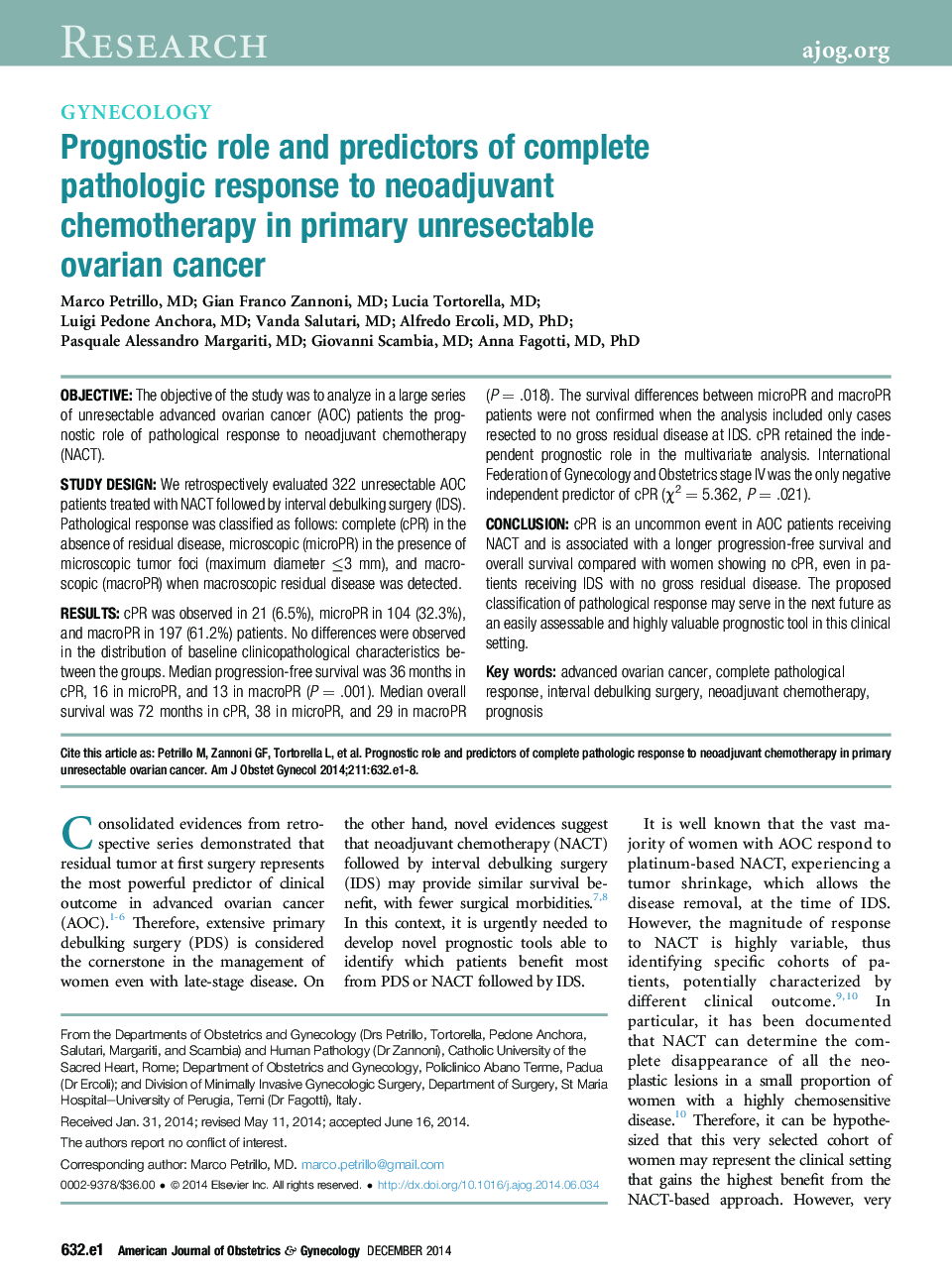| Article ID | Journal | Published Year | Pages | File Type |
|---|---|---|---|---|
| 6145385 | American Journal of Obstetrics and Gynecology | 2014 | 8 Pages |
ObjectiveThe objective of the study was to analyze in a large series of unresectable advanced ovarian cancer (AOC) patients the prognostic role of pathological response to neoadjuvant chemotherapy (NACT).Study DesignWe retrospectively evaluated 322 unresectable AOC patients treated with NACT followed by interval debulking surgery (IDS). Pathological response was classified as follows: complete (cPR) in the absence of residual disease, microscopic (microPR) in the presence of microscopic tumor foci (maximum diameter â¤3 mm), and macroscopic (macroPR) when macroscopic residual disease was detected.ResultscPR was observed in 21 (6.5%), microPR in 104 (32.3%), and macroPR in 197 (61.2%) patients. No differences were observed in the distribution of baseline clinicopathological characteristics between the groups. Median progression-free survival was 36 months in cPR, 16 in microPR, and 13 in macroPR (P = .001). Median overall survival was 72 months in cPR, 38 in microPR, and 29 in macroPR (P = .018). The survival differences between microPR and macroPR patients were not confirmed when the analysis included only cases resected to no gross residual disease at IDS. cPR retained the independent prognostic role in the multivariate analysis. International Federation of Gynecology and Obstetrics stage IV was the only negative independent predictor of cPR (Ï2 = 5.362, P = .021).ConclusioncPR is an uncommon event in AOC patients receiving NACT and is associated with a longer progression-free survival and overall survival compared with women showing no cPR, even in patients receiving IDS with no gross residual disease. The proposed classification of pathological response may serve in the next future as an easily assessable and highly valuable prognostic tool in this clinical setting.
